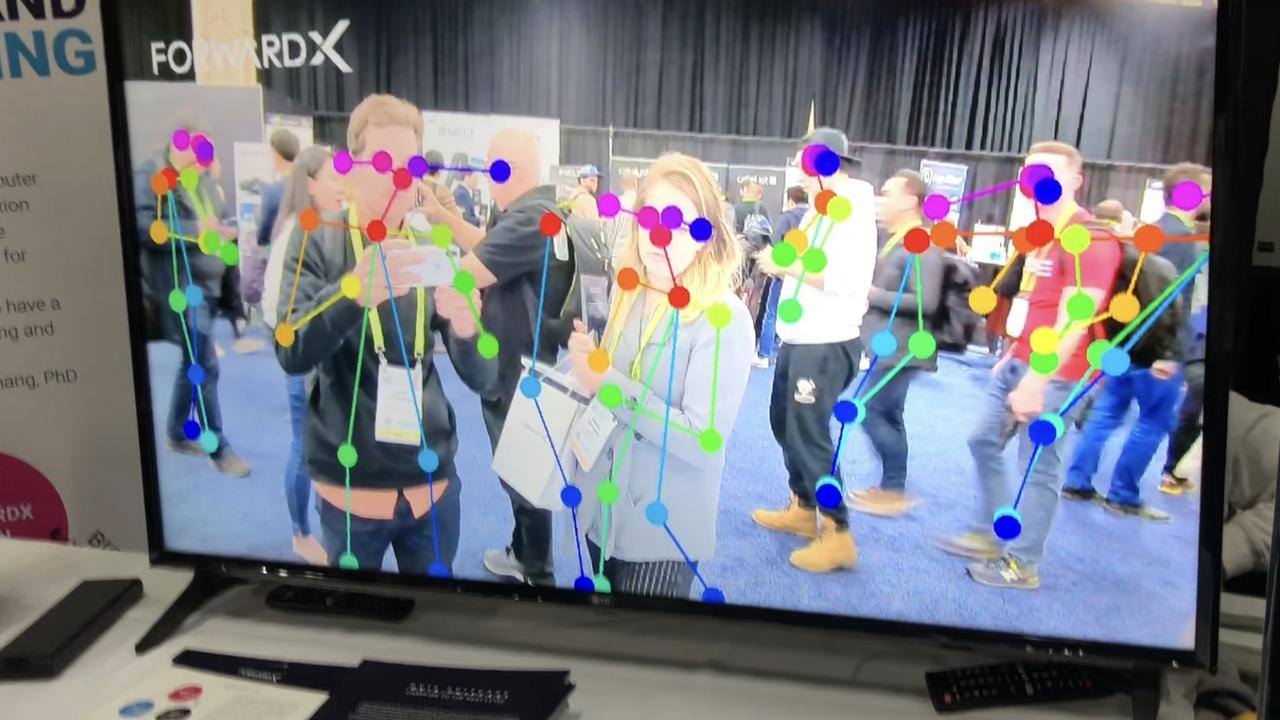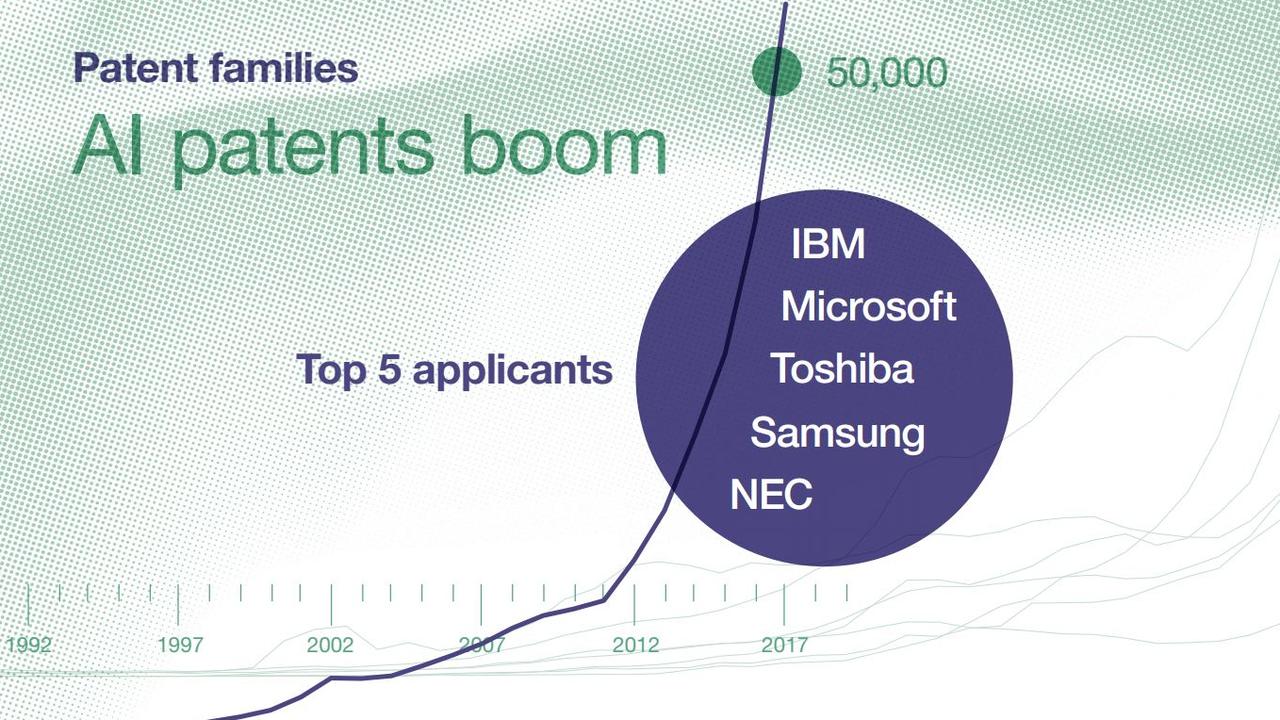Global patents show how the AI race wants to change everything around us
The world’s biggest companies are racing towards a new claim of tech supremacy — and one picture shows how insane the battle has become.
If there was ever a trendy buzzword in tech, it has to be artificial intelligence.
The world’s biggest consumer electronics show was held last month and wandering around the seemingly endless stalls of emerging new products, it was impossible to avoid the claims of artificial intelligence in some form or another.
Some gadgets were, of course, smarter than others. From facial recognition food bowls for your pets to handheld speech recognition and language translation devices, smart tech and self-learning algorithms abound.

Encompassing terms including deep learning, machine learning, neural networks and general artificial intelligence which seeks to build computers with a capacity to think and learn like humans, it can be hard to pin down what AI truly means.
But it’s clearly here to stay. Patent filings for artificial intelligence-based inventions have exploded in recent years, with more than half of all such patents filed since 2013.
That’s according to new data from the World Intellectual Property Organisation (WIPO) which reveals a massive surge in AI-based innovations, indicating that such technologies have taken a giant step out of the theoretical realm.
In its first ever Technology Trends Report, WIPO found that some 340,000 AI-related patent applications have been filed worldwide since the term was first coined in 1956, with more than half of them filed since 2013 — and that’s based on data ending in 2016.
“There has been a quantum leap since about 2013,” WIPO chief Francis Gurry told reporters in Geneva.
“We can expect a very significant number of new AI-based products, applications and techniques that will alter our daily lives, and also shape future human interactions with machines we created,” he said.

TALK TO YOUR TECH
The goal articulated by the big brands at CES this year was to design AI systems that evolve to better understand and serve users. The technology is already seeping into our devices, including TVs that can adjust the picture based on the environment to home robots that act as a personal nurse.
In the consumer realm, outside of smartphones, AI-powered smart speakers are perhaps the most common manifestation of the tech trend.
According to a recent report by VERSA, the leading Australian Voice Experience (VX) agency, 1.35 million Australians now have a smart speaker with a voice-activated assistant at home.
Google Home was the first to arrive in Australia in July 2017 and is the most popular AI powered voice speaker. It is present in 12 per cent of homes and 7 per cent of workplaces in the country. Meanwhile Amazon Echo is in 2 per cent of homes and 3 per cent of workplaces, while Apple HomePod is in 2 per cent of homes and 1 per cent of workplaces, according to the report.
“The elderly are the next big adopters after young people,” said Kath Blackham, managing director at VERSA, who has worked with brands like Domino’s Pizza and Flight Centre to help bring their online platforms into the age of voice.
Increasingly elderly who didn’t embrace the use of computers and smartphones have taken up smart speakers to perform basic internet searches and tasks, she said. “That’s what we’re seeing in the US.”
‘INFILTRATING MOST THINGS’
The growth of connected smart devices — many of which leverage basic AI technology — has led to a proliferation of smart home gadgets.
Sales data from eBay shared with news.com.au shows that such devices are increasingly popular with Aussie shoppers.
After an already massive uptake when they launched in 2017, Google Home speakers saw a 165 per cent increase in sales last year. Meanwhile, smart light bulbs, smart security cameras, and smart vacuums saw a 42 per cent, 79 per cent and 176 per cent jump in online sales, respectively.
The WIPO study found that companies were far more active than universities and other public research institutions in filing AI-related patents, accounting for 26 out of the 30 top applicants in the field. Chinese organisations make up 17 of the top 20 academic players in AI, it added.
Machine learning, and in particular the neural networks that have revolutionised machine translation, are the dominant AI technique disclosed in the patents and is present in more than one third of them.
And deep learning, which is a machine-learning technique that includes speech recognition systems, is the fastest growing AI technology, with a nearly 20-fold increase in patent applications between 2013 and 2016, the report found.
The data also showed that computer vision, which includes image recognition used for things like self-driving cars, was the most popular application of AI technology, as it was mentioned in a full 49 per cent of all AI-related patents.
“The general direction that we see ... is that this is infiltrating most things,” Mr Gurry said
— with AFP





